Cherry pruning rules - optimal time and work scheme
Few summer residents who grow cherries on their plots know that this crop, in equal measure with apple trees and apricots, needs regular pruning. Without this event, the tree grows too high, its crown becomes thick and poorly transmits sunlight, the fruits become smaller and crumble. Sanitary pruning of cherries involves the removal of old and diseased shoots, as a result of which the tree is less infected with fungal and infectious diseases.
There are several ways to form a crown, from which the gardener must choose the most suitable for the plant variety and the area where it grows. In addition, when starting to prune cherries, you should study the elementary rules for removing branches and adhere to them during the work.
Types of trimming
For cherries, formative, rejuvenating and sanitary pruning is used. Each of the types of processing performs a specific function and is carried out in a specific period.
- Formative.
The goal of formative pruning is to create the skeleton of the tree and shape its crown properly. For the first time, such processing is carried out after planting and then the formation is continued with annual pruning. They try to hold this event in early spring, until the sap begins to move and the plant is at rest. The optimal time is from mid-March to April 10.
- Sanitary.
Sanitary pruning is advisable during fruiting and after harvesting. It provides for the removal of old, broken and infected branches. As a result, the crown transmits light better, new fruitful branches are formed, the plant is less likely to get sick.
- Anti-aging.
This type of pruning is appropriate for older trees when the fruiting is clearly decreasing. The fruits at this time become small and are individually located on the uppermost branches. To restore normal fruiting and prolong the life of the tree, branches of all orders must be pruned.
How to prune young cherries?
Sweet cherry differs from other fruit trees by the rapid growth of the central trunk. In three years, a young seedling can turn into a plant up to 4-6 m in height, from which it is very difficult to collect fruits. To prevent such a nuisance from happening, in the first year after planting, it is necessary to trim the sprout in order to reduce its growth upward.
There are several types of shortening: strong, medium and weak. The choice of pruning scheme depends on the characteristics of the area in which the fruit plant grows. Important factors are the time of the onset of the first frost, air humidity, and soil composition. If other garden trees in the vicinity are growing quickly, heavy pruning can be applied. Otherwise, it is better to shorten the barrel a little.
Weak shortening means trimming the sprout by a quarter of its length, resulting in new lateral shoots appearing at an acute angle with respect to the central trunk.
With medium pruning, remove the upper half of the one-year growth. In this case, the number of new shoots will be less than with weak shortening, and the angle of departure from the trunk will be greater.
Strong shortening involves the removal of more than half of the one-year growth. In this case, lateral shoots are formed from all remaining buds, and the angle between the new branches and the trunk is 90 °.
The main types of crowns
Crown formation is a very important agrotechnical measure in the cultivation of sweet cherries.If you allow the shoots to grow as you like, then in a few years you will get a tall tree with chaotically located branches and a small number of small fruits.
There are several types of cherry crown decoration.
- Flattened
The most popular method of crown formation among gardeners. In the spring, a one-year-old seedling is cut, leaving a trunk 80 cm high. At the beginning of summer, a central conductor and two side branches directed in different directions are isolated, and the remaining shoots are cut off.
The following spring, two more branches are left, located 50 cm higher than those left earlier. Excess shoots are removed again. In the third year of life, the plants cut off the key conductor at the site of weak lateral branching.
- Sparse tiered
Trees with a sparse-tiered crown have a central trunk, on which the first tier of branches is located at a height of 60 cm from the ground. It represents 3-4 skeletal branches directed in different directions. The second tier also consists of 4 branches and is approximately 60 cm apart from the first. It is important that the shoots of the second tier are between the branches of the first, without overlapping them. Branches of the third tier are formed in the same order in the third year. In subsequent years, it is necessary to control the height of the sweet cherry, cutting off the side shoots by 50 cm.
- Bushy
Sweet cherry with a bushy crown has a small height, which is very convenient for harvesting. To obtain such a tree, after planting, the seedling is shortened to 70 cm. Having measured 20 cm from the top, all lateral buds are removed. At the beginning of summer, 6 strong shoots are isolated, the rest break off.
The following spring, the branches are shortened by cutting off 10 buds. Shoots directed upward and into the crown are removed. In the third year, the branches of the second tier are thinned out, intersecting shoots are cut out.
Spring pruning of cherries
The optimal time for spring pruning of cherries is from mid-March to mid-April. At this time, the plant had not yet fully awakened from hibernation, but the night frosts stopped, and with this the danger of freezing the cut shoots disappeared.
Formative pruning is carried out in the spring. The crown formation scheme is chosen depending on the goals of the gardener, plant varieties, climate and other factors. The general task of any formative pruning is to control the growth of the plant and give the lateral shoots the desired direction. This activity doesn't require much effort and is quite doable for beginners.
To reduce upward growth, trimming of the central conductor to the lateral bud should be performed every spring. To carry out this procedure, you need to use a sharp knife or pruner, having previously disinfected the instrument with boiling water.
The top of the stem is trimmed to the desired height. After a while, a new shoot is formed from the left upper kidney, which is folded down and fixed in this position. Until the branch is lignified, it is held with pegs, struts or tied with a rope to the branches of the lower tier.
In addition, to give the shoot a horizontal position, you can prune this branch again next spring to the outer bud. The result is a low tree with horizontally arranged fruit-bearing branches, from which it is very convenient to harvest. The only drawback of this method of crown formation is the need for props under the branches loaded with fruits.
In the spring, shoots are removed from the root, tops are cut out, the ends of the branches are shortened, depending on the amount of last year's growth.
How to prune cherries in summer?
Many novice gardeners skip summer pruning of cherries, although this is a very useful and even necessary procedure for the health of the tree.
Summer pruning takes place in two stages. The first treatment is carried out at the very beginning of summer, when the leaves have blossomed and ovaries have appeared. At this time, it is clearly visible which branches have dried up, frozen or infected during the winter. They must be carefully cut.
If young healthy shoots are seen directed towards the inside of the crown of the tree, they should be pruned to the outer bud in order to get a full-fledged, correctly growing fruit branch in the next season.
Advice
It is better to remove a young shoot in summer than to cut out a thick, lignified branch in the fall.
The second time in the summer, you can start pruning after picking the berries. Now the processing is only sanitary. Carefully examine the crown, remove broken and diseased branches.
Pruning in the fall
Autumn pruning of cherries begins immediately after the tree sheds foliage, without waiting for the onset of the first frost. After all, the plant needs to recuperate after "surgery" and prepare for the winter.
Cut out the extra branches growing in the wrong direction. Annual shoots should be shortened by a third. To prevent the penetration of bacteria, fresh cuts are covered with garden varnish or sprinkled with charcoal.
Advice
If you need to remove a thick twig, it is better to use a garden saw rather than a pruner. Gardeners have noticed that cuts made with a saw in the fall heal faster.
Sweet cherry is a tasty healthy berry that both adults and children love to eat. A properly formed crown and regular pruning of trees will keep the plants young and increase yields.
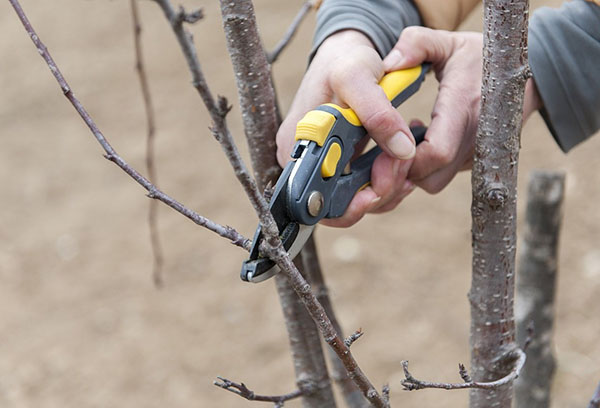
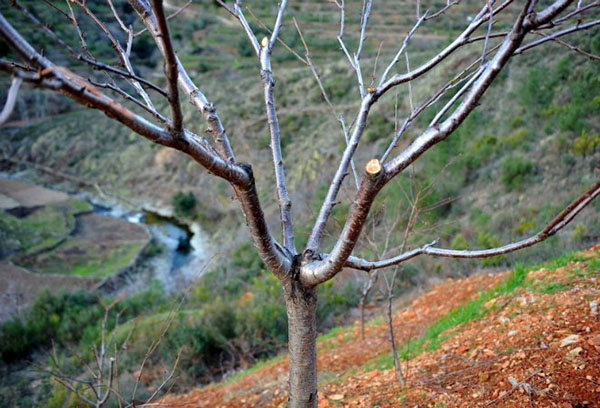
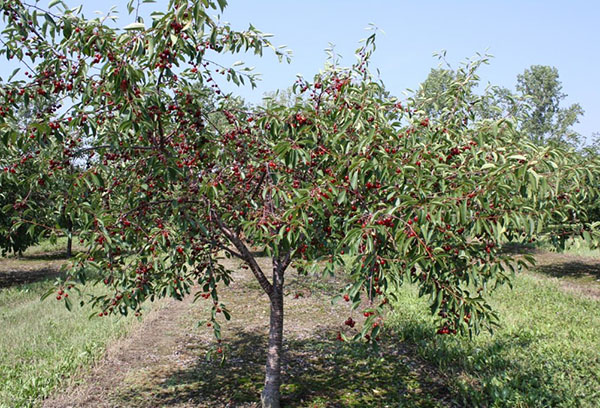


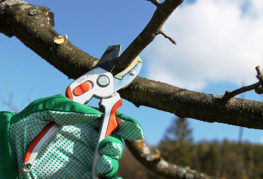
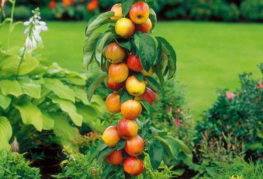
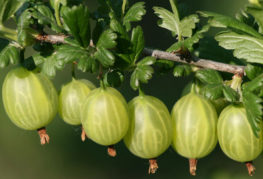
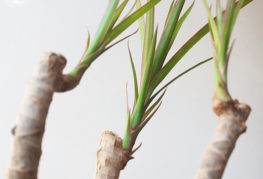
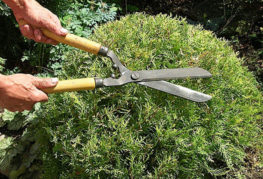
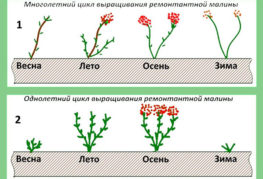
and will be published shortly.